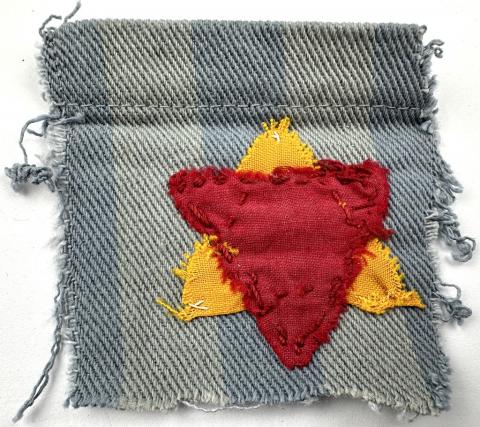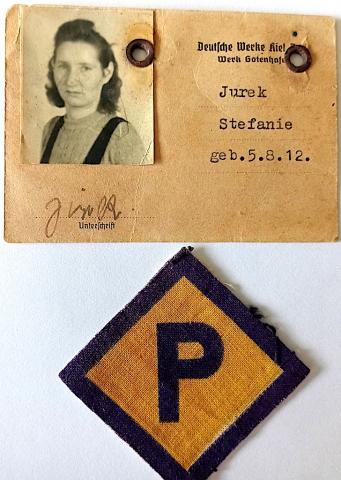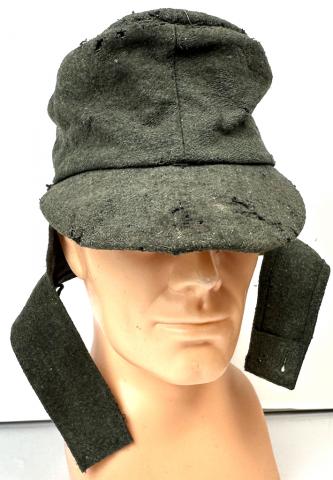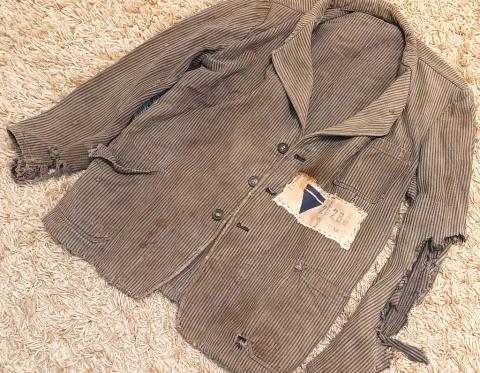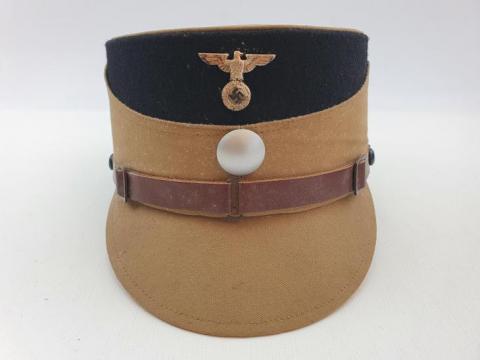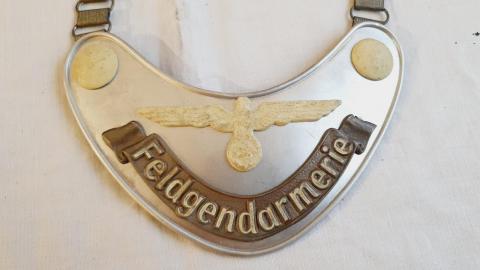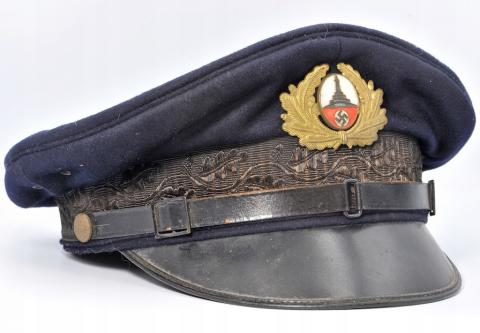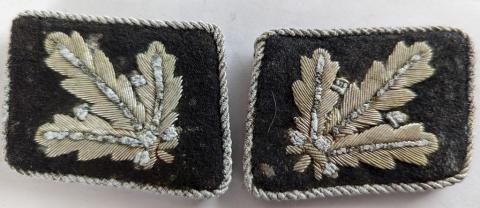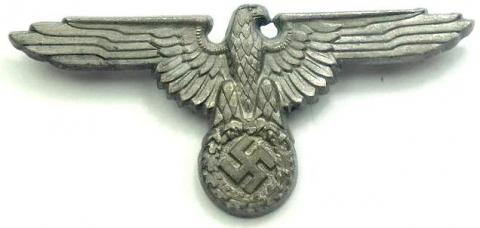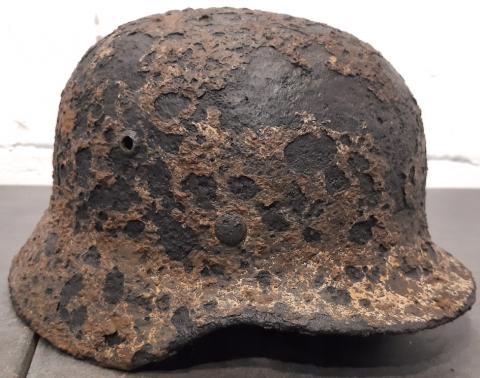SCARCE Concentration Camp TREBLIKA survivor inmate jacket with blue triangle patch uniform
TREBLINKA was the second biggest EXTERMINATION camp. Not a lot of forced labor there or around like at Auschwitz.
The people who went there were to be exterminated.
so not a lot of survivor had the chance to get out of it alive, unfortunately.
i never see another jacket from that camp in 28 years of collecting.
heavily worn, this should be in a museum of used to teach the Holocaust.
NOT INTENT to be sold for other purpose.
Treblinka was the second-deadliest extermination camp to be built and operated by Nazi Germany in occupied Poland during World War II. It was in a forest north-east of Warsaw, 4 km (2.5 mi) south of the village of Treblinka in what is now the Masovian Voivodeship. The camp operated between 23 July 1942 and 19 October 1943 as part of Operation Reinhard, the deadliest phase of the Final Solution.[6] During this time, it is estimated that between 700,000 and 900,000 Jews were murdered in its gas chambers, along with 2,000 Romani people. More Jews were murdered at Treblinka than at any other Nazi extermination camp apart from Auschwitz-Birkenau.
Managed by the German SS with assistance from Trawniki guards – recruited from among Soviet POWs to serve with the Germans – the camp consisted of two separate units. Treblinka I was a forced-labour camp (Arbeitslager) whose prisoners worked in the gravel pit or irrigation area and in the forest, where they cut wood to fuel the cremation pits. Between 1941 and 1944, more than half of its 20,000 inmates were murdered via shootings, hunger, disease and mistreatment.
The second camp, Treblinka II, was an extermination camp (Vernichtungslager), referred to euphemistically as the SS-Sonderkommando Treblinka by the Nazis. A small number of Jewish men who were not murdered immediately upon arrival became members of its Sonderkommando whose jobs included being forced to bury the victims' bodies in mass graves. These bodies were exhumed in 1943 and cremated on large open-air pyres along with the bodies of new victims. Gassing operations at Treblinka II ended in October 1943 following a revolt by the prisoners in early August. Several Trawniki guards were killed and 200 prisoners escaped from the camp; almost a hundred survived the subsequent pursuit. The camp was dismantled in late 1943. A farmhouse for a watchman was built on the site and the ground ploughed over in an attempt to hide the evidence of genocide.
Arrival of the Soviets
In late July 1944, Soviet forces approached from the east. The departing Germans, who had already destroyed most direct evidence of genocidal intent, burned surrounding villages to the ground, including 761 buildings in Poniatowo, Prostyń, and Grądy. Many families were murdered. The fields of grain that had once fed the SS were burned. On 19 August 1944, German forces blew up the church in Prostyń and its bell tower, the last defensive strongpoint against the Red Army in the area. When the Soviets entered Treblinka on 16 August, the extermination zone had been levelled, ploughed over, and planted with lupins. What remained, wrote visiting Soviet war correspondent Vasily Grossman, were small pieces of bone in the soil, human teeth, scraps of paper and fabric, broken dishes, jars, shaving brushes, rusted pots and pans, cups of all sizes, mangled shoes, and lumps of human hair. The road leading to the camp was pitch black. Until mid-1944 human ashes (up to 20 carts every day) had been regularly strewn by the remaining prisoners along the road for 2 km (1.2 mi) in the direction of Treblinka I. When the war ended, destitute and starving locals started walking up the Black Road (as they began to call it) in search of man-made nuggets shaped from melted gold in order to buy bread.
